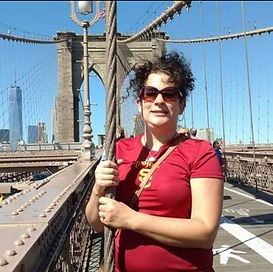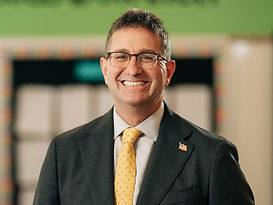GUEST COLUMN.
MANAGING TO AVOID “AN ERA OF GLOBAL BOILING,” IN NEW YORK
By Thomas P. DiNapoli, New York State Comptroller

July 2023 was a record-breaking month for multiple measurements of destructive weather. In that one month, the United States faced climate-related disasters that caused over $1 billion in destruction. The list just began with extreme wildfires that endangered lives and communities in many parts of the world, and blanketed New York and other states in a haze of smoke. On July 9, unpredictable rains flooded parts of the state’s Hudson Valley, forcing the closure of roads. The month was one of the ten wettest in recorded history in the Empire State.
New York has rightly pursued an aggressive campaign to reduce greenhouse gas emissions to limit the most dangerous impacts of climate change under the Climate Leadership and Community Protection Act. Passed in 2019, the Act set ambitious goals to reach 70% renewable electricity by 2030, a zero emissions electric grid by 2040 and economy-wide, net-zero GHG emissions by 2050.
The goals our state has set are admirable and join global efforts to use cleaner sources of energy. But creating goals alone is only the first step in achieving results. They require careful planning and management if we hope to achieve them. As it stands, New York needs to triple the 2022 renewable electricity capacity to reach our goal of having 70% of electricity come from renewable sources by 2030. As of 2022, 29% of the electricity generated in the state came from renewable sources. Of this, 75% comes from hydroelectric generation and 25% primarily from wind and solar energy.
My office has identified three challenges that have hindered progress towards our prior climate action goals: inconsistent funding, canceled projects, and delays in the siting and interconnection processes.
Inconsistent funding for renewable electricity incentives has, in the past, created a significant barrier to ramping up production. From 2005 to 2015, annual funding committed to renewable energy procurement varied from as low as $66 million to as high as $400 million. Fluctuating investments meant inconsistent growth that fell short of the state’s previous renewable energy goals.
Along with inconsistent funding came project cancellations. Between 2005 and April of 2023, 28 projects totaling 1.3 gigawatts of energy were canceled – which accounted for 11.3% of the renewable energy capacity under contract in those years. Cancelations can occur for many reasons, such as opposition to the project, changes in the developer’s finances, or unforeseen energy transmission costs.
For contracts that were not cancelled, operationalization is yet another hurdle. Only about .294 gigawatts – 3.1% of the total renewable electricity generation under contract at the time – has gone on line since 2015. These delays come from a lengthy permitting process and the time needed for the state’s grid operator, the New York State Independent System Operator (NYISO), to conduct studies of renewable energy projects and their impact on the energy grid. NYISO had wait times over three years between 2018 and 2022. Alternatively, grid operators such as the Seminole Electric Cooperative and Electric Reliability Council of Texas had wait times half the length of NYISO.
Recent efforts have begun to address some of these challenges – funding has increased, a new permitting process has been established for large projects, and improvements have been made to the interconnection review process. New York must capitalize on this momentum, and state agencies must continue to consistently and proactively identify and address problems in order to reach our goals. The state will also face new challenges given the volume and scale of new projects. First, significant new electric transmission infrastructure is needed to allow for the transmission of renewable electricity to customers throughout the state. Second, the costs of incentives and transmission projects, borne almost exclusively by utility customers, should be clearly assessed and disclosed. The state must make efforts to hold these costs down, particularly for low-income households and households on fixed budgets.
UN Secretary General António Guterres has declared the world is in an “era of global boiling” and has said that we can only avoid the very worst effects of climate change by acting with immediacy and intention. New York has set a clear direction and must actively manage its way to a renewable future for all New Yorkers.
The contents of this guest column reflect those of the author and not necessarily those of Barrett and Greene, Inc.



































































































